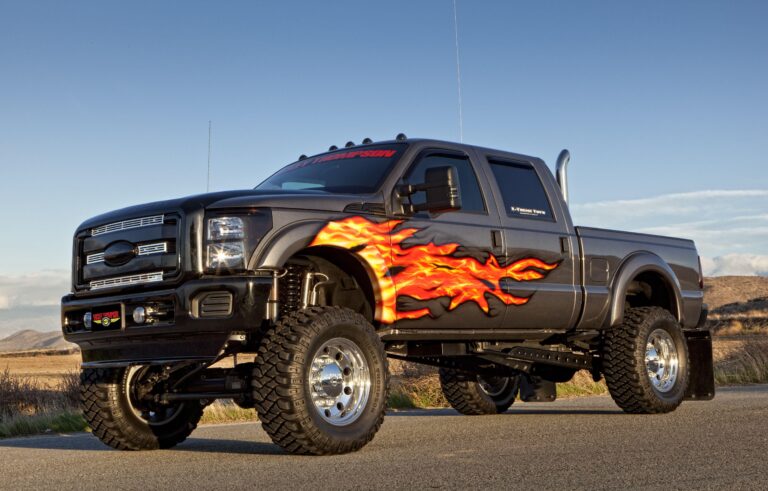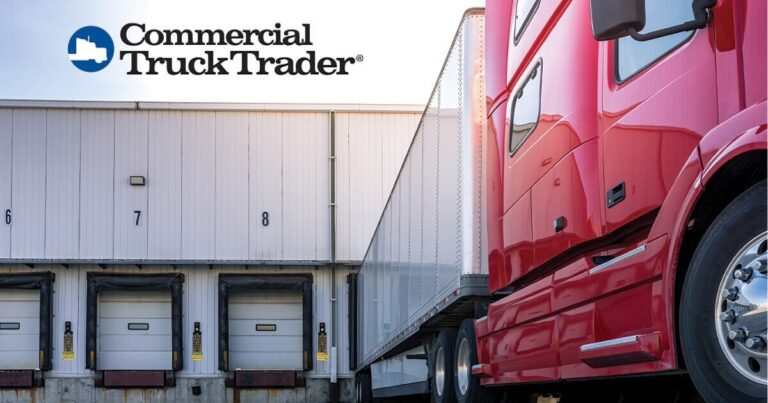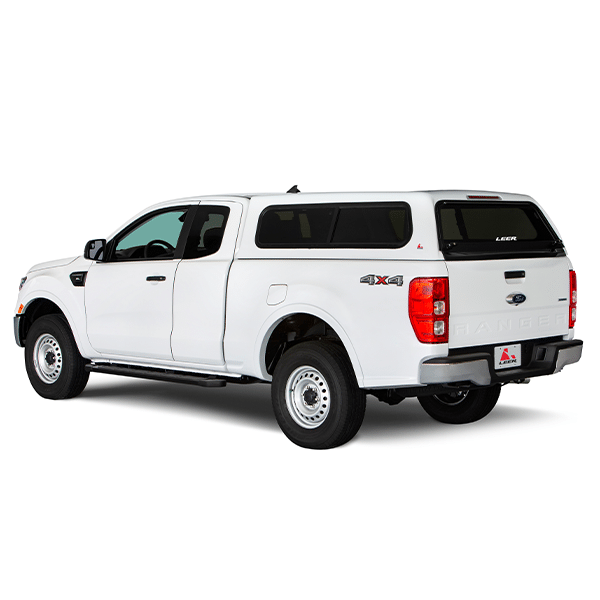U-Haul Truck Sizes And Prices: Your Ultimate Guide to a Smooth Move
U-Haul Truck Sizes And Prices: Your Ultimate Guide to a Smooth Move cars.truckstrend.com
Moving can be one of life’s most challenging yet exciting transitions. Whether you’re relocating across town or across the country, the success of your move often hinges on one critical decision: choosing the right moving truck. U-Haul, a household name in DIY moving, offers a diverse fleet of trucks designed to accommodate moves of all sizes. However, navigating the various U-Haul truck sizes and understanding their associated prices can be daunting. This comprehensive guide aims to demystify the process, providing you with all the information you need to select the perfect U-Haul vehicle and budget effectively for your next relocation.
Understanding U-Haul Truck Sizes: A Fleet for Every Move
U-Haul Truck Sizes And Prices: Your Ultimate Guide to a Smooth Move
U-Haul’s extensive fleet is designed to cater to a wide range of moving needs, from a few boxes to a multi-bedroom household. Each truck size offers specific advantages in terms of capacity, maneuverability, and features. Choosing the right size is paramount; too small, and you’ll face multiple trips or leave items behind; too large, and you’ll pay for unused space and potentially struggle with handling.
Here’s a breakdown of U-Haul’s most common truck sizes and their ideal uses:
-
Pickup Truck:
- Typical Use: Small local jobs, hauling materials, dorm room moves, or transporting a few large items (e.g., a couch, appliance).
- Capacity: Roughly 76 cubic feet. Not enclosed, so items are exposed to elements.
- Key Features: Open bed, great for short distances and easy parking.
- Fits: Small furniture, a few boxes, or outdoor equipment.


Cargo Van:
- Typical Use: Studio or small apartment moves, local deliveries, college student moves, or transporting delicate items that need protection from the elements.
- Capacity: Approximately 245 cubic feet. Enclosed and secure.
- Key Features: Easy to drive, similar to a large SUV, low deck for easy loading.
- Fits: A queen-size bed, mattress, boxes, small dresser, and a few other items.

-
10′ Truck:
- Typical Use: Studio or 1-bedroom apartment moves. This is U-Haul’s smallest enclosed moving truck.
- Capacity: Around 402 cubic feet.
- Key Features: Easy to drive, low deck, patented EZ-Load ramp (available on most trucks 15′ and larger, check availability for 10′).
- Fits: A king-size bed, dresser, sofa, TV, and several boxes.
-
15′ Truck:
- Typical Use: 1 to 2-bedroom apartment or small home moves. It’s the most popular truck size for a reason – it strikes a great balance.
- Capacity: Roughly 764 cubic feet.
- Key Features: Low deck, EZ-Load ramp, often comes with a "Mom’s Attic" storage area above the cab for fragile items.
- Fits: Two bedrooms, including a king-size bed, dressers, sofa, love seat, dining set, and numerous boxes.
-
17′ Truck:
- Typical Use: 2 to 3-bedroom home moves. Ideal for slightly larger homes or those with more furniture.
- Capacity: Approximately 865 cubic feet.
- Key Features: Low deck, EZ-Load ramp, Mom’s Attic. Slightly longer than the 15′ for more linear space.
- Fits: Similar to the 15′ but with more room for extra furniture, appliances, or more boxes.
-
20′ Truck:
- Typical Use: 3 to 4-bedroom home moves. Suitable for larger families or extensive belongings.
- Capacity: Around 1,016 cubic feet.
- Key Features: Low deck, EZ-Load ramp, Mom’s Attic. Provides significant space.
- Fits: Three to four bedrooms, including multiple beds, dressers, large sofas, appliances, and a substantial number of boxes.
-
26′ Truck:
- Typical Use: 4+ bedroom home moves. U-Haul’s largest rental truck, designed for the biggest jobs.
- Capacity: Approximately 1,600 cubic feet.
- Key Features: Largest capacity, low deck, EZ-Load ramp, Mom’s Attic.
- Fits: A complete 4+ bedroom house, including large appliances, extensive furniture, and all your household goods.
Decoding U-Haul Pricing: How Costs Are Calculated
U-Haul’s pricing structure varies significantly depending on whether you’re making a local (in-town) move or a one-way (long-distance) move. Understanding these models is crucial for accurate budgeting.
In-Town (Local) Moves
For local rentals, U-Haul typically charges a flat daily rate for the truck, plus a per-mile charge.
- Daily Rate: This is a fixed fee for a 24-hour rental period. It can be as low as $19.95 for a pickup truck or cargo van, increasing with truck size.
- Per-Mile Charge: You’ll be charged for every mile you drive. This rate usually ranges from $0.69 to $0.99 per mile, but can vary by location and demand.
Example: A 10′ truck might cost $29.95 per day + $0.79 per mile. If you drive 50 miles, your base cost would be $29.95 + (50 * $0.79) = $29.95 + $39.50 = $69.45.
One-Way (Long-Distance) Moves
One-way rentals involve a fixed rate that includes a set number of days and an allotted mileage allowance.
- Fixed Rate: This rate is determined by the truck size, your origin and destination cities, the date of your move, and availability. It can range from a few hundred dollars to several thousand.
- Mileage Allowance: Your rental includes a specific number of miles. If you exceed this allowance, you’ll be charged an additional per-mile fee (which can be higher than local per-mile rates).
- Days Allotment: The rental also includes a set number of days to complete your move. Returning the truck late will incur additional daily charges.
Factors Influencing Price:
- Location: Prices can vary significantly between urban and rural areas, and even between different U-Haul locations within the same city.
- Time of Year/Demand: Peak moving season (late spring, summer, end of month) sees higher prices and lower availability. Off-peak times (mid-week, mid-month, fall/winter) often offer better rates.
- Availability: Limited truck availability can drive up prices.
- Duration: Longer rental periods generally cost more.
Additional Costs to Consider:
- Fuel: You are responsible for fueling the truck. U-Haul trucks often require unleaded gasoline, but larger trucks (like the 26′) can be quite fuel-inefficient.
- Environmental Fee: A small, non-negotiable fee often added to rentals.
- Damage Waiver/Insurance: U-Haul offers various protection plans (e.g., Safemove, Safemove Plus) that cover damage to the truck or your belongings. While optional, these can provide peace of mind. Check if your personal auto or homeowner’s insurance already covers rental trucks.
- Equipment Rentals: Dollies, furniture pads, utility hand trucks, and appliance dollies are typically rented separately.
- Taxes: Applicable state and local taxes will be added to your total.
How to Choose the Right U-Haul Truck Size
Selecting the perfect truck size is the most critical step in ensuring a smooth and cost-effective move.
- Assess Your Belongings (Inventory & Declutter): Before even looking at trucks, go through everything you own. Declutter ruthlessly! Sell, donate, or discard items you no longer need. Then, make a detailed inventory of what’s left, noting large furniture, appliances, and the number of boxes.
- Consider Volume vs. Weight: While weight is a factor, cubic feet (volume) is the primary determinant for truck size. Visualize your belongings.
- Utilize U-Haul’s Sizing Tools: U-Haul’s website has excellent resources, including a "Room-by-Room Moving Guide" and a "Truck Size Calculator" that help estimate the ideal truck size based on your inventory.
- When in Doubt, Go Bigger: It’s almost always better to have a little extra space than not enough. An extra trip costs more in mileage, fuel, and time, not to mention the frustration of not fitting everything. A slightly larger truck might only be a small increase in the daily rate but can save you significant hassle.
- Factor in Awkward Furniture: Large, oddly shaped items like sofas, dining tables, king-size beds, and appliances often dictate the minimum truck size more than the number of boxes.
- Don’t Forget the "Extras": Bikes, lawnmowers, outdoor furniture, and garage items also need space.
Smart Strategies for Saving on U-Haul Rentals
Moving can be expensive, but there are ways to keep your U-Haul costs down:
- Book in Advance: Especially during peak season (summer, end of month), booking weeks or even months ahead can secure better rates and ensure truck availability.
- Move During Off-Peak Times: If your schedule allows, move mid-week, mid-month, or during the fall/winter. These times typically have lower demand and better prices.
- Compare One-Way vs. In-Town: For moves that are borderline long-distance, calculate the cost of a local rental (multiple trips) versus a one-way rental. Sometimes, a one-way rental is cheaper even for shorter distances.
- Pack Efficiently: Maximize every inch of space in the truck. Pack boxes uniformly, disassemble furniture, and load heavy items first and low. This ensures you make the most of the space you’re paying for.
- Be Mindful of Mileage: Plan your route carefully to minimize driving distance. For local moves, every mile adds to your cost.
- Return On Time (or Early): Avoid late fees by returning the truck promptly. If you think you’ll need more time, call U-Haul as soon as possible to extend your rental.
- Understand Insurance Options: Check with your personal auto or homeowner’s insurance provider to see if you have coverage for rental trucks. If so, you might be able to decline U-Haul’s additional coverage, saving money.
- Check for Discounts: Look for student, military, or other potential discounts. Sometimes U-Haul offers promotions directly on their website.
Important Considerations and Potential Challenges
While U-Haul makes moving accessible, it’s essential to be aware of potential challenges:
- Driving Experience: Driving a large moving truck is very different from a car. They are longer, wider, heavier, and have larger blind spots. Practice caution, take wide turns, and allow extra braking distance.
- Fuel Efficiency: Larger trucks are notoriously fuel-inefficient. Factor in significant fuel costs, especially for long-distance moves.
- Parking and Maneuvering: Parking a large truck, especially in urban areas or tight driveways, can be challenging. Plan your parking strategy at both ends of your move.
- Availability: During peak seasons, specific truck sizes can be in high demand, leading to limited availability or higher prices.
- Unexpected Costs: Always budget a little extra for unforeseen expenses like additional fuel, an extra day’s rental, or a last-minute equipment rental.
- Loading/Unloading: Don’t underestimate the physical effort involved. Recruit friends, family, or consider hiring professional movers to help with loading and unloading.
U-Haul Truck Sizes and Estimated Prices Table
Please note: Prices are estimates and can vary significantly based on location, availability, time of year, and specific U-Haul center promotions. One-way rates are highly variable and determined by the specific route and demand.
| Truck Size | Typical Use | Approx. Capacity (cu. ft.) | Est. Local Daily Rate (from)* | Est. Per Mile Rate* | One-Way Rate (Variable)*** | Key Features |
|---|---|---|---|---|---|---|
| Pickup Truck | Small hauls, single items, dorm moves | 76 | $19.95 | $0.69 – $0.99 | N/A (local only) | Open bed, easy to park |
| Cargo Van | Studio/small 1-BR apt, local deliveries | 245 | $19.95 | $0.69 – $0.99 | Varies (e.g., $100-$300+) | Enclosed, low deck, easy to drive |
| 10′ Truck | Studio/1-BR apt | 402 | $29.95 | $0.79 – $0.99 | Varies (e.g., $300-$800+) | Easy to drive, fits in most parking spots |
| 15′ Truck | 1-2 BR apt/small home | 764 | $29.95 | $0.79 – $0.99 | Varies (e.g., $400-$1,200+) | EZ-Load ramp, Mom’s Attic, popular choice |
| 17′ Truck | 2-3 BR home | 865 | $39.95 | $0.79 – $0.99 | Varies (e.g., $500-$1,500+) | More space than 15′, EZ-Load ramp, Mom’s Attic |
| 20′ Truck | 3-4 BR home | 1,016 | $39.95 | $0.79 – $0.99 | Varies (e.g., $600-$2,000+) | Large capacity, EZ-Load ramp, Mom’s Attic |
| 26′ Truck | 4+ BR home | 1,600 | $39.95 | $0.79 – $0.99 | Varies (e.g., $700-$2,500+) | Largest capacity, EZ-Load ramp, Mom’s Attic |
- Starting daily rates and per-mile rates are subject to change and vary by location and demand.
- One-way rates are highly dynamic and depend on specific origin, destination, date, and availability. These are general ranges and not guarantees.
Frequently Asked Questions (FAQ)
Q1: Do I need a special license to drive a U-Haul truck?
A1: No, for standard U-Haul moving trucks (up to 26 feet), you only need a valid standard driver’s license. No commercial driver’s license (CDL) is required.
Q2: What is the minimum age to rent a U-Haul truck?
A2: You must be at least 18 years old to rent a U-Haul truck. However, to rent a trailer, you must be 21 years old.
Q3: Is insurance included with a U-Haul rental?
A3: No, basic insurance is not included. U-Haul offers optional coverage plans like Safemove and Safemove Plus that protect you, your belongings, and the rental equipment. It’s recommended to check if your personal auto or homeowner’s insurance policy provides any coverage for rental trucks.
Q4: Can I return the U-Haul truck to a different location?
A4: Yes, if you selected a "one-way" rental, you can return the truck to any authorized U-Haul dealer at your destination city. For "in-town" rentals, the truck must be returned to the same location where it was picked up.
Q5: What if I need the truck longer than planned?
A5: It’s crucial to contact U-Haul customer service as soon as you realize you’ll need more time. They can often extend your rental, though additional daily charges will apply. Failure to communicate can result in significant late fees.
Q6: Do U-Haul trucks have automatic transmission?
A6: Most U-Haul trucks are equipped with automatic transmissions, making them easier to drive for most people. However, it’s always good to confirm when booking if you have a strong preference.
Concluding Summary
Navigating U-Haul truck sizes and prices is a pivotal step in planning a successful and stress-free move. By carefully assessing your belongings, understanding the nuances of local versus one-way pricing, and considering all potential costs, you can make an informed decision that saves you time, money, and hassle. Remember to leverage U-Haul’s sizing tools, book in advance, and plan your move strategically during off-peak times if possible. With the right truck and a clear understanding of the costs involved, your next U-Haul experience can be a smooth journey to your new beginning.





